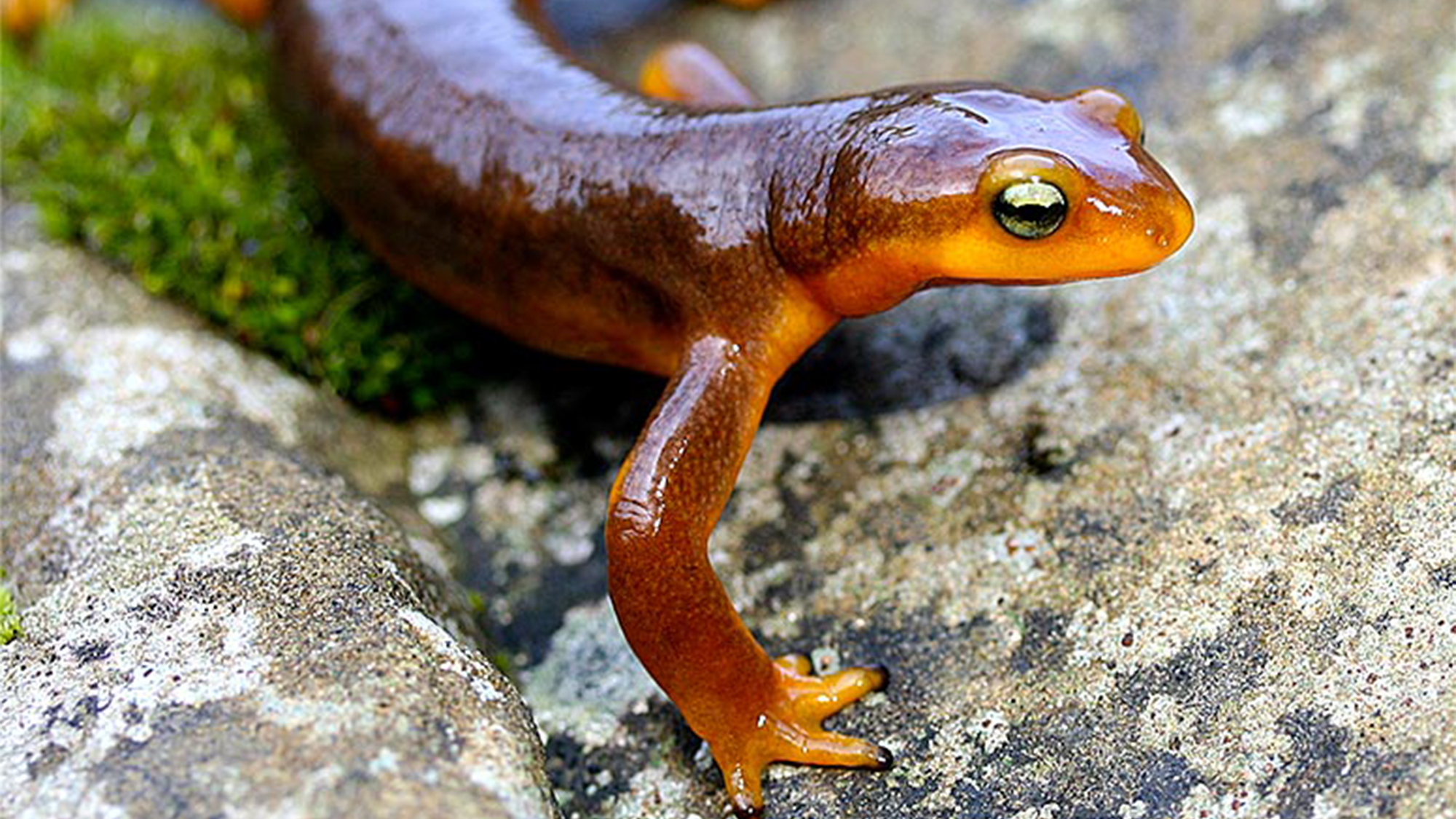

The newts of the genus Taricha come armed with a powerful neurotoxin that they excrete from their skin called tetrodotoxin. The toxin is a chemical defense used against predators. In a study published November 28 in the journal Frontiers in Amphibian and Reptile Science, a team of biologists describes how female Taricha newts produce more tetrodotoxin than males. The findings suggest that tetrodotoxin is not only a line of defense, but also a kind of signal.
[Related: Poisonous animals probably took their sweet time developing unappetizing bright colors.]
“It had long been considered that newts’ toxin concentrations do not change in their lifetime and that males and females tend to have the same toxin concentrations. Now, we have shown that female newts actually contain more toxin than male newts,” study co-author and University of California, Davis ecologist and evolutionary biologist Gary Bucciarelli said in a statement. “We observed significantly greater and more drastically fluctuating toxin concentrations in females, which may have numerous causes, like mate selection.”
Totally toxic traits
Tetrodotoxin is also found in the deadly blue-ringed octopus, pufferfish, and some shellfish and amphibian species. In sexually reproducing animals, sexually dimorphic traits like canine tooth size and vibrant color can be a key to reproductive fitness and their survival. These differing traits are believed to increase an individual’s chances of producing the next generation of offspring.
Scientists already knew that Taricha newts had other sexually dimorphic traits, such as mass, size, and tail height, so they were curious to see if toxin production also differed between the sexes.
In the study, the authors took tetrodotoxin samples from more than 850 newts across 38 different sites in California. They noted the sex, size, mass, and tail height for all of the animals, and if the female newts were pregnant. The newts that had been captured and released were also marked so that they could know if they had been previously sampled.
Next, the team analyzed their skin to quantify how much of the toxin was found in males compared to females. They also looked at the relationship between sexually dimorphic variables like size and tail height and how toxin levels changed at the study sites where they could sample more than once across the breeding season.
Understanding how these toxins work could help biologists understand more about the newts’ reproductive strategies and aid in conservation measures. A recent study found that two out of five amphibians are threatened with extinction and they continue to be the most threatened class of vertebrates on Earth.
Femme fatale
The authors found that the females carried more toxins than the male newts. While tetrodotoxin levels generally fluctuated in both sexes, the change in females’ levels of toxin was larger. This means that female newts are likely more dangerous than males.
[Related: How we can help the most endangered class of animals survive climate change.]
“For would-be predators, these higher concentrations pose a serious threat,” said Bucciarelli. “Taricha newts should not be handled unless by knowledgeable personnel, because they can contain up [to] 54 milligrams of tetrodotoxin per individual. Doses up to 42 micrograms per kilo of bodyweight can lead to hospitalization or death.”
The tetrodotoxin also appeared to interact with some of the other sexually dimorphic traits. The heavier newts produced higher levels of the toxin than the lighter newts and the median concentration of toxin was always higher in females regardless of size or weight. The physical resources needed to produce the toxin are possibly invested differently by females than males. Their skin may also be able to carry more of the toxin.
The higher levels of tetrodotoxin might protect females that are vulnerable to predators while reproducing. It could also allow the females to transfer toxin-producing bacteria to their eggs to potentially protect their offspring from snakes.
Poison patterns
Previously, tetrodotoxin was believed to just be a defense against snakes. The differing amount between the sexes suggests that there might be more to it. The aroma due to the higher concentrations of the toxin may be a cue that helps the newts decide where they look for mates and which mates they choose.
“Taricha newts’ breeding patterns are highly dependent on precipitation patterns. Given the drought conditions of California, we did not always have a balanced design when field sampling,” said Bucciarelli. “However, we feel the pattern is still very strong. Our next plan is to explore how drought and fire affect newts and their toxin concentrations and how each sex responds to these natural disasters.”
